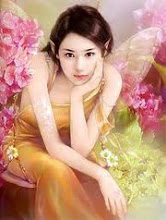Friday, 16 November 2012
Sunday, 11 November 2012
Venus Flytrap – Feed On Insects
Venus flytrap is known as Dionaea
muscipula. It belongs to the kingdom - plantae, phylum – anthophyta, class –
magnoliospdia, order – nepenthales and
family – droseraceae. This is one kind of interesting plant which feed on
insects. Venus flytrap is the carnivorous plant. Initially scientist believed
this plant to be a myth until they found the physical proof for the existence
of such a plant. The plant is innocuous looking rosette. The leaf blades
terminate in distinctive bivalve traps with sharply toothed edges. The length
of the leaf blade is up to 12cm whereas the trap length is upto 4 cm. the trap
of venus flytrap is very powerful as the
ones set by trappers for wolves, bears
etc. it is effective in catching its own small preys.
The leaves of the venus flytrap is open wide and contain stiff hairs on them called trigger
or sensitive hairs. The sensitive hairs at
fold of the leaf prevent them from closing every time when a drop of
rain falls on it because the leave requires two or more of these hairs
triggered in succession. Like other plants venus flytraps gather nutrients form
gases in the air and nutrients in the soil. However they live healthier if they
get nutrients from insects. Insects are attracted to the small traps. On the
inner lobes there are usually three
trigger hair and if an insect lands on lobe and brushes against two of these
hairs the trap with snap partially shut with a speed that amazes onlookers. The teeth
are now interlocked preventing larger prey from escaping . The trap need to close further to produce tight
seal for the prey to be digested.
The outside of the trap is
generally green where as the inner side have
red pigments that varies in shade depending on the age of the trap. Venus
flytrap needs wet roots, poor acidic soil, high humidity and full sunlight to
grow. The recommended soil mixtures is
one that contains sphagnum moss and sand. The plant produces the flowers
in a tall stalk above the leaves. Seeds
produces by the flowers are very tiny. The Venus flytrap is listed as an
endangered species. Venus flytrap is endemic to a restricted area of the Carolina’s
coastal plain including southeastern, North Carolina and northeastern south
Carolina.









.jpg)


























